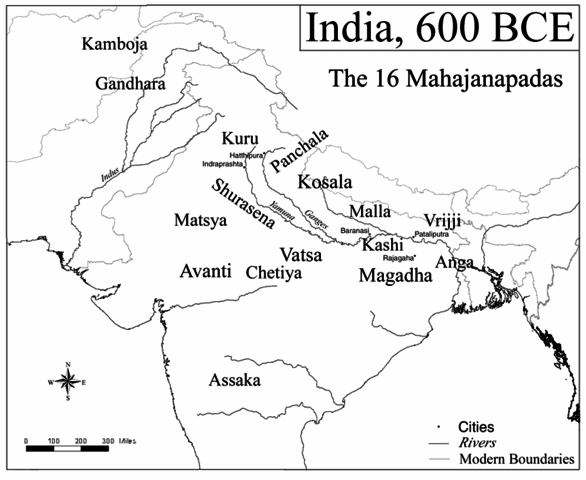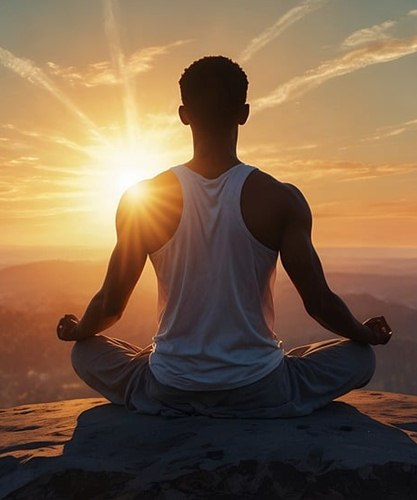Sanjay Sonawani
Previous Part of this research paper: The Origin of the Yoga System
History of Yoga
In ancient times, before written records existed, we can understand the early stages of Yoga through archaeological findings and logical deductions. Originally, Yoga aimed to unite physical and spiritual activities to bring about mental peace and bliss. Over time, Yoga evolved into different schools with various meanings.
Since ancient times, Indians have practiced idol worship. The Vedas did not widely mention the term Puja, indicating that early Vedic practices did not commonly include this ritual. Recognizing that external journeys alone couldn’t resolve life’s challenges, early thinkers emphasized the need for an inner journey. They began practicing Vratas, a crude form of ritual, to address moral and personal issues.
Early Samana thinkers referred to Yoga as Vrata, emphasizing its role in purifying the soul and achieving equanimity. This marked the early beginnings of what we now recognize as modern Yoga. Patanjali later codified essential vows such as Ahimsa (non-violence), Satya (truthfulness), Asteya (non-stealing), Aparigraha (non-acquisition), and Brahmacarya (chaste living) as yamas (restraints) and niyamas (observances).
In the ancient Indus civilization, there are seals showing men sitting in yoga positions. People have many ideas about what these might mean, but without writing from that time, we can’t be sure why they were shown like this. We don’t know if they were trying to gain special powers or if they were on a spiritual journey. These poses, fundamental to yoga, existed long before the Vedas were written.
History of Yoga
When the Vedic Aryans came to India, the local religion was already strong. The Aryans mixed their gods with local ones who had similar powers. At the same time, there were many thinkers and ascetics called Samanas. They were trying to control their minds and find peace, which is why they were called Jina or victors over their inner struggles. They aimed to see the world calmly, which is why they were also called Samana.

even though yoga is divided into many groups, its main goal stayed the same as it was in ancient times. The ascetics wanted to find pure happiness, and yoga was one way they did this, even if they had different ideas about how to reach their goals. The Samanas cared about the calmness of all living things, and their ideas made a big impact on culture. They were not interested in everyday pleasures. Instead, they searched for answers about life’s meaning, if there’s a creator, why there’s sorrow, and how to be ethical.
Their ideas are clear in texts like the Bhagavati Sutra, where they talk about gaining true knowledge by defeating inner struggles to become Jina.
History of Yoga
The occult practices of folk religion, known as Tantrashastra, likely contributed to the emergence of certain practices aimed at gaining supernatural powers and commanding the netherworld through mysterious chants. It’s possible that these practitioners invented the syllable ‘Om’ for its mystical resonance, despite its absence in Vedic literature. Over time, ‘Om’ gained spiritual significance beyond its original purpose, attracting followers on the spiritual path who interpreted it in fantastical ways not originally intended.
The Vratyas
In Rigveda, the Vedics encountered new groups such as the Yatis, Vratyas, Munis, and Keshis when they arrived in the Indian sub-continent between 1200 and 1000 BC. The Vratyakanda section of Atharvaveda illustrates how the mystic Vratyas, particularly in the Magadha region, impressed the Vedic Aryans who initially held conflicting views about them. As Vedic Aryans moved eastward around 900 BCE, their interactions with Vratyas, who followed different spiritual practices (vratas), influenced their philosophy and perspective on the world. This shift coincided with the time of Jaina Tirtankar Parshvanath in the ninth to eighth century BC, marking a period of significant cultural and philosophical exchange in ancient India.
Chapter fifteen of the Atharvaveda, called the ‘Vratyakanda’, focuses on the Vratyas, praising them. In verses nine and ten of this chapter, the king honors a Vratya as a guest for supporting the community, committees, armies, and kings. The text suggests that kings should treat Vratyas with respect, even considering them superior in some ways.
The Vratyas described in the Atharvaveda are conscientious practitioners (yogis), distinct from those involved in Soma rituals. The concept of sacrifice here seems to symbolize spiritual and mystical practices. In the Atharvaveda, Vratya is also referred to as ‘Mahadev‘. Vratya and Yogi are considered synonymous, as both renounce worldly attachments and are highly esteemed. Similarly, yatis and keshis are individuals who undertake various vows (vratas) to attain spiritual powers.
The term ‘Vrata‘ should not be interpreted in a modern sense alone; it still involves observance, but its original meaning encompassed broader aspects.
However, there is an undeniable connection between Vrata (Yoga), Tapa (austerity), and the identities mentioned above. In the context of the Vedic tradition, the term Rishi was reserved for those who composed or recited Vedic verses (Richas), while Muni referred to someone who observed a vow of silence. These terms are not interchangeable as commonly assumed.
History of Yoga
At first, the Vedic people found it hard to understand the spirituality behind the practices of figures like yatis, vratyas, and keshis, which seemed unusual to them. However, they were deeply impressed by them. Even though they respected these practices and tried to incorporate them into Vedic expressions, they referred to the soul as Vata, meaning invisible wind.
केश्यग्निं केशी विषं केशी बिभर्ति रोदसी । केशी विश्वं स्वर्दृशे केशीदं ज्योतिरुच्यते ॥१॥
मुनयो वातरशनाः पिशङ्गा वसते मला । वातस्यानु ध्राजिं यन्ति यद्देवासो अविक्षत ॥२॥
(ऋ. १०.१३६.१-२)
1. The god with long, flowing hair supports fire, water, heaven, and earth. He looks like the entire sky and is called the light because of his long hair.
2. The wise sages, wrapped in the wind and wearing yellowish robes, follow the swift path of the wind to where the gods have already been.
In the early stages of Vedic understanding, the soul was often linked to the wind, which is invisible but can be felt. This was quite different from how later Indian thinkers understood the soul. The Vedic people adopted this idea into their beliefs, fitting it into their worldview even though they didn’t have a specific term for it. When they settled in Magadha, they used their word Yuj as yoga to explain how the individual soul connects with the universal self. Samanic thinkers, however, believed that the cosmic soul and individual soul were fundamentally the same.
Using a new term to replace the original one often obscures the origin of any idea, especially if the new term carries a different meaning. This often confuses students in later generations, making them unsure about what really happened in the past. The concept of yoga has unfortunately suffered from this issue.
In ancient Indian thought, the term “Vrata” was synonymous with inner balance to Samanic thinkers. They didn’t see things in terms of opposites, but rather as a unity between the cosmic soul and the individual self, which they called Moksha – liberation from the cycle of life and death. To attain this, one had to practice Vratas, or spiritual exercises. Physical postures were considered important for beginners, but they were not considered essential to spirituality itself.
History of Yoga
When the Upanishads proclaim Aham Brahmasmi (Brihadaranyaka Upanishad 1.4.10), they echo the Samanic perspective. When the individual overcomes inner obstacles, the supreme cosmic entity merges with the individual’s soul, and people call such a person a Jina. Here, “Brahma” signifies the cosmic soul. In this context, the term “yoga” doesn’t convey the full meaning intended by the original term “Vrata”.
The ancient Vedic people sought happiness through rituals and prayers to their gods, focusing on material pleasures. Over time, they realized outer efforts alone weren’t enough for true fulfillment and eternal happiness. They integrated Samanic principles into their practices, adapting and presenting them as Yoga. They preferred the term Yoga over the original term Vrata because it suited them better.
Yoga, as they understood it, became a spiritual path to liberation within the Vedic tradition. It involved controlling the mind and connecting it with the divine, which was a significant departure from their earlier focus on worldly desires.
Patanjali, in his Yoga Sutras, emphasized restraining the mind’s fluctuations to achieve Yoga, stating that Yoga is about mastering and quieting the mind’s thoughts. Jain philosophy influenced this idea, emphasizing restraint and overcoming disorderly thoughts and actions (Karma).
In contrast to the Vedic emphasis on material success and longevity, the Samana tradition, including Jainism, aimed for equanimity among souls and ultimately liberation from the cycle of karma. Yoga inherited and expanded upon these ideas, evolving within the Vedic philosophical framework.
History of Yoga
To conclude the above article, the following points must be stressed-
- Vrata was the original name of the Yoga and those who followed the path of Vrata were called Vratya’s.
- Samana, an ancient Indian tradition of equanimity was the founder of the Vrata alias Yoga system.
- Jaina, being progenitors of the samana (Equanimity) tradition can be credited with the foundation of Yoga.
- The Vedic stream adapted the Vrata tradition from the Vratyas in the form of yoga and propagated it, though they couldn’t erase its origin.
- Patanjali belonged to the non-Vedic Shaivait stream and he used all the previous streams to codify Yoga in his treaty ‘Yogsutra’ between the third to fifth century AD., just around the time when Umaswati composed his treaty “Tatvarth Sutra” on Jain Philosophy in sutra style.
- The Vedic community has nothing to do with the foundation of yoga as fundamental tenets of the term yoga go contrary to Vedic philosophy. It cannot have evolved from Vedic tenets but from earlier Samanic principles of spiritual growth and liberation
History of Yoga
Sanjay Sonawani is an Indian researcher in various branches of knowledge, including philosophy, religion, science, history, sociology, linguistics, economics etc. He has written over 100 books, and print and online media have published thousands of his articles.
You May Like to Read …..
How to Stay Focused: Strategies for Maximizing Your Productivity
Platonic Love: Beyond Romance and Desire
TheyWon Hindi (Online Magazine)
TheyWon Marathi (Online Magazine)
